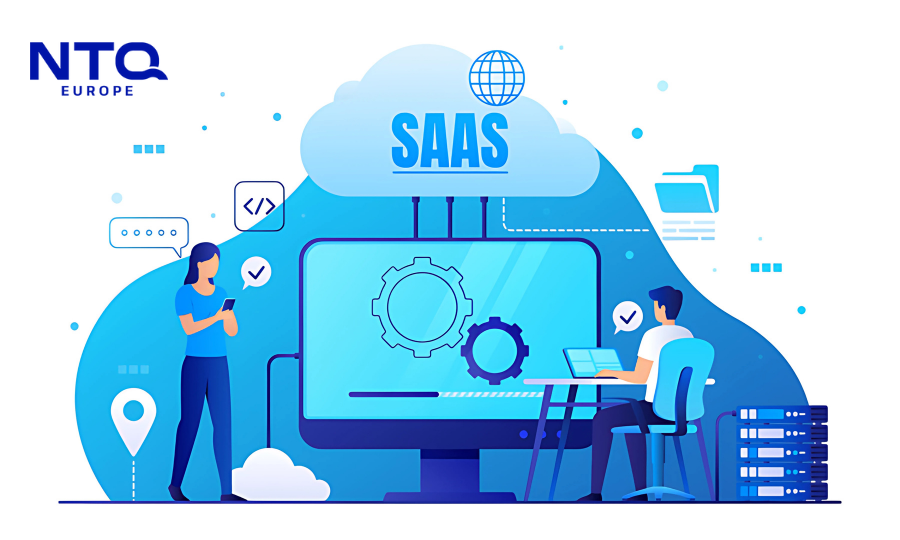1. Understanding PoC Development in the Software World
What is PoC in Software Development?
A Proof of Concept (PoC) is like a trial run. It’s a smart way to find out if your idea or solution actually works before going all-in. Instead of building the full product, PoC development focuses on a limited version that highlights the core functionality. This helps teams quickly test if something is technically feasible, especially when working with cutting-edge technologies like AI, blockchain, IoT, or cloud platforms where things can sound great on paper but need real-world validation.
PoC development services are a go-to for businesses looking to explore fresh ideas, confirm technical directions, or even show potential value to investors. Whether you’re testing product-market fit, checking if a new system will integrate with your current setup, or just need evidence to get internal buy-in, a PoC gives you the clarity to move forward with confidence.

PoC development is a strategic approach to test whether a particular idea, concept, or solution is technically feasible.
Why PoC Matters in IT and Software Projects
PoC software development can save time, reduce risk, and guide smarter decisions.
- Validate Feasibility: Confirms if your idea or tech approach will actually work, especially useful for complex or new technologies.
- Reduce Risk: Identifies flaws early before you commit to full-scale development.
- Drive Decisions: Provides real data, not assumptions, to support next steps and investments.
- Improve Clarity: Helps teams and stakeholders align on goals, scope, and expectations.
- Win Buy-In: Gives investors and decision-makers something tangible to support.
- Strengthen Offshore Collaboration: Sets a clear foundation when working with offshore teams, ensuring smoother scaling.
PoC vs. Prototype vs. MVP: Key Differences
These three approaches often get confused, but each serves a different purpose in the product development lifecycle.
| Feature | PoC (Proof of Concept) | Prototype | MVP (Minimum Viable Product) |
| Goal | To confirm whether an idea is technically feasible | To visualize the design and user flow of the solution | To launch a working product with essential features |
| Focus | Functionality & feasibility | UI/UX and interactive experience | Market validation & user feedback |
| Audience | Internal stakeholders, technical teams, decision-makers | Designers, project managers, user testers | Early adopters, real users |
| Complexity | Very limited, only core concept tested | Medium, non-functional mock-ups or clickable interfaces | Full-stack development, but limited in features |
| Duration | Short-term, days to a few weeks | Medium-term, depending on design scope | Long-term, evolves over time with new features |
| Output | Functional mini-project proving core idea | Interactive or static visual layout of the user experience | Launch-ready product with real user engagement |
2. Benefits of PoC Development for Businesses
PoC development services help businesses overcome challenges to scale effectively by offering early validation and minimizing investment risks.

PoC development services help businesses overcome challenges to scale effectively by offering early validation and minimizing investment risks.
Validating Feasibility Before Major Investments
One of the biggest challenges for companies is to decide whether to invest in an unproven idea. A PoC development allows businesses to test the core functionality of a concept using real technologies in a controlled setting. This helps decision-makers understand whether the concept is viable before allocating resources.
Cost-Efficiency and Faster Time-to-Market
Developing a PoC for software development can help companies identify potential risks from an early stage, thus optimizing resources. This approach is notably effective for businesses that work with an offshore development center as streamlined communication and iterative delivery are key.
Reducing Risks of Product Launch
Launching a product without proof of its feasibility or relevance to users can cause high risks of market rejection. Leveraging PoC in software development can avoid this scenario by revealing technical, business, or usability issues in the early stages, allowing teams to improve timely.
Attracting Investors with Practical Models
Before making any investment decision, investors need to see something tangible or potential for increasing revenue. A working PoC can be the answer as it offers a concrete demonstration of progress and potential, improving credibility that can convince investors to pour their money into the business.
Enhancing Collaboration and Buy-In Across Teams
When teams work across departments or borders, misalignment is common. A PoC acts as a central reference point that aligns product vision, user needs, and technical feasibility, improving collaboration among technical teams, business leaders, and even third-party vendors.
Overall, PoC development transforms business challenges like risk, inefficiency, and uncertainty, into opportunities for validation, agility, and growth.

The PoC Development process includes four main steps
3. The PoC Development Process: Step-by-Step
Step 1: Define Objectives and Scope
Step 2: Plan and Select the Right Technology
Step 3: Develop and Test the PoC
Step 4: Evaluate Results and Decide Next Steps

4. Challenges in PoC Development and How to Overcome Them
| Challenge | Why It’s a Problem | How to Overcome It |
| Defining the Right Scope | Never try to validate all features at once as it can add complexity and slow progress. Remember the key core of a PoC is to test the core idea of your product. | Choose one core functionality to focus on, then define criteria clearly and essential scope for validation. |
| Managing Stakeholder Expectations | Sometimes stakeholders expect a PoC to look and feel like a finished product, when it’s actually just a simple test of core functionality. This mismatch in expectations can lead to confusion, misalignment, or even dismissal of a perfectly valid concept. | Ensure you explain the PoC’s purpose clearly with stakeholders to help them set clear expectations from the start. |
| Ensuring Security and Compliance | Many industries require high standards of adherence to security and regulatory requirements, such as finance, healthcare, or e-commerce. Failure to address compliance can lead to legal issues or compromise sensitive data. | Involve security and legal teams from early stages to avoid any risks. Test data regularly. Choose a trusted partner who meets global standards like ISO, GDPR, or HIPAA. |
5. Partnering with NTQ Europe for PoC Development Success
To get a successful PoC execution, choosing the right IT service partner is critical. NTQ Europe stands out as a trusted IT development center as we offer a unique combination of technical excellence, strategic insight, and customer-centric delivery.

To get a successful PoC execution, choosing the right IT service partner is critical.
Why Us?
- Industry Know-How That Matters: Whether it’s fintech, healthcare, logistics, or other sectors, our team brings hands-on domain expertise to design PoCs that solve real business problems.
- Results You Can Trust: We’ve helped dozens of clients turn PoCs into fully funded, market-ready products. From validating new ideas to launching in competitive markets, we’ve done it; and we’ll help you do it too.
- A Team Built for PoC: We don’t treat PoC as an afterthought. Our dedicated task force focuses solely on PoC development, giving you faster delivery, sharper insights, and less back-and-forth.
- More Than Just Developers: We work closely with you to fine-tune your idea, flag potential risks early, and suggest the most effective route forward, using agile, iterative methods that adapt as you go.
- Support from Idea to MVP: No need to switch vendors when you’re ready to scale. We guide you through every stage with full continuity.
- Cross-Cultural Alignment: With teams across Europe and Asia, we balance offshore cost advantages with strong communication, Western business understanding, and high responsiveness.
- Ready for the Future: Our engineers are certified in all the latest tech such as AI/ML, blockchain, IoT, and cloud-native systems; we’re equipped to handle even the most innovative ideas.
Real-World Success Story
- Client: European HealthTech Startup
- Challenge: Unsure whether AI could analyze patient data effectively for personalized care.
- Solution: Our dedicated team developed a PoC in six weeks using a hybrid AI + cloud solution.
- Result: The client secured $2M in seed funding based on the working PoC and moved to MVP development with us.
Choosing our dedicated team means you’re gaining a strategic partner committed to turning your vision into validated, investor-ready innovations.
6. Let’s Build the Future, One Concept at a Time
PoC development is more than a technical validation. It’s a strategic research & conceptualization strategy for innovation, growth, and market success. In an era where speed and smart risk management matter more than ever, businesses need a trusted partner to help them move from idea to impact.
Ready to validate your next big idea? Let’s create a PoC that opens the door to long-term success. Contact us today to schedule your consultation and take the first step toward building tomorrow’s solutions.



















